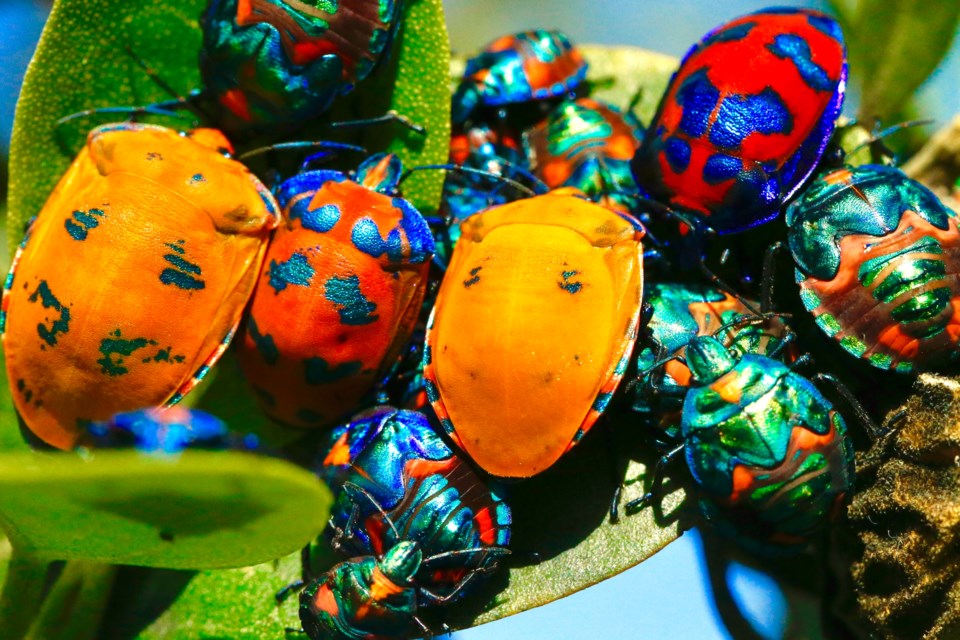The Broomfield Leader accepts contributions, photos, and op-eds for publication from community members, business leaders and public officials on local topics. Publication will be at the discretion of the editor and published opinions do not represent the views of the Broomfield Leader or its staff. To submit a contribution, email [email protected].
With summer in full swing and temperatures continuing to rise, we have reached a very special time of the year — the peak of bug season. People tend to have complicated relationships with bugs. Many of us are familiar with the uncomfortable feeling of discovering an unexpected spider in the basement, having an invading army of ants disrupt a family meal, fleeing from wasps attempting to share your soda, or being swarmed by mosquitos immediately after stepping outside. Most encounters with bugs are met with annoyance, or even fear, and many of these little critters are considered “pests”. However, there is more to bugs than them bugging you.
Bugs are part of a much larger group of animals — invertebrates. Humans, as well as most of our favorite furry and scaly companions, are vertebrates. This means we have backbones whereas our invertebrate neighbors, as their name suggests, do not.
Try to think of every species of vertebrate you know of – every type of mammal, reptile, bird, fish, amphibian, and marsupial. This may seem like a daunting task because there are close to 70,000 described species of vertebrates.
Let’s now look at invertebrates. Even though you may not know as many species of invertebrates, the number of animals with backbones pales in comparison to the number of animals without them. There are an estimated 1.25 million described species of invertebrates, and if we do the math, this means that approximately 97% of all animal species worldwide are invertebrates.
You may be wondering why we should care. Do invertebrates actually impact us as humans? The answer: absolutely, much more than most people realize!
We rely on invertebrates to perform so many crucial tasks every day. For example, pollinators, such as bees, beetles, butterflies, moths, and flies, assist in the reproduction of 35% of food crops worldwide and are crucial for plant reproduction.
Invertebrates are also incredibly efficient when it comes to waste removal. There are groups of invertebrates, known as decomposers, that perform the hefty task of breaking down dead organic materials, a process that helps return nutrients to the soil. A plethora of invertebrate species also make for efficient and natural methods for controlling pests.
Another role invertebrates fill that makes them necessary for a healthy earth is one that is often overlooked – they are the primary food source for many vertebrates. Animals such as reptiles, birds, amphibians, mammals, and even some fish rely solely on invertebrates for nutrition. This means that even the widely despised mosquito – a major food item for many animals – has a purpose.
Unfortunately, invertebrate populations are rapidly declining worldwide. Since they are crucial for life as we know it, a drop in the number of invertebrates could have devastating consequences.
As they are important pollinators, we would see a large decline in human food crops. This, along with their role as an important food source for vertebrate species, would lead to the collapse of many food webs, leading to a massive decline in most animal species.
Without invertebrates acting as decomposers, organic material would never disappear. No new soil would be produced, and no nutrients necessary for plant and fungal life would be recycled, further limiting plant growth.
Without certain species of invertebrates, pest species would run rampant, their population growth completely uninhibited by a lack of predation. These pests would further destroy plant species and spread diseases to humans and other animals.
Given this information, we should think about how we, as individuals, can work toward preventing this nightmare from becoming reality.
One of the best ways to help our native invertebrate populations is to construct invertebrate-friendly outdoor spaces. This can be done by reclaiming garden spaces with native plants. Not only does this encourage population growth of many native invertebrates, this also gives pollinators access to food and places to reproduce.
Another great way to build invertebrate habitats is by not removing dead trees. Rotting wood provides homes for a variety of invertebrates, especially native bees.
Additionally, being conscientious about any chemicals used in outdoor spaces can aid in invertebrate population growth. Pesticides marketed to target one specific invertebrate species often affect many species of beneficial invertebrates. The wellbeing of animals that eat invertebrates will also improve, leading to healthy natural spaces that foster a diverse ecosystem full of native flora and fauna. Hopefully, through making these changes, we can show our bug friends that we appreciate all the hard work they do.


